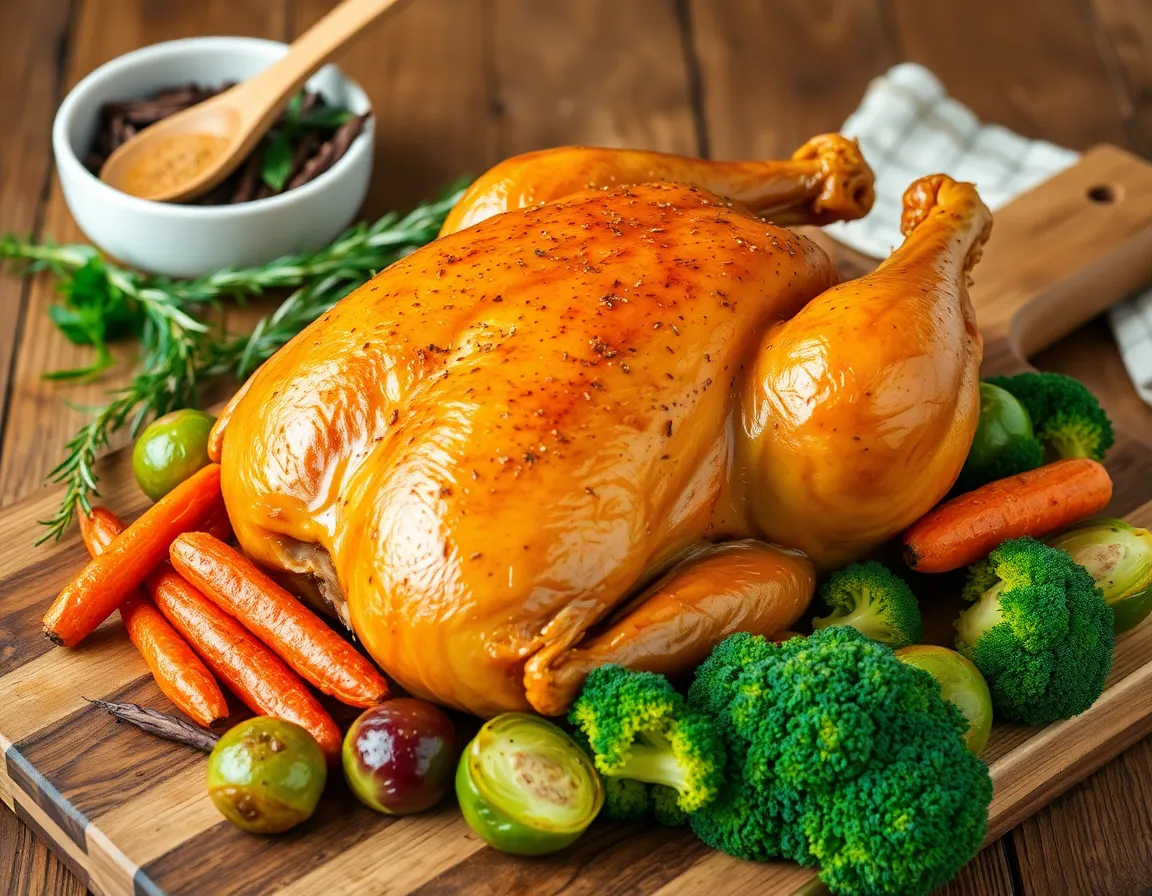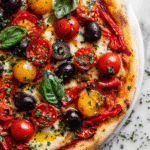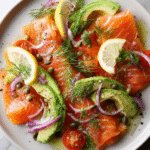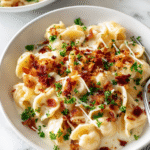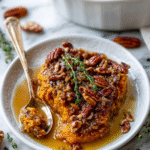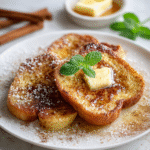There’s something truly magical about the aroma of roast chicken wafting through your kitchen. Whether you’re a beginner eager to master a classic or an experienced cook looking to perfect your technique, this roast chicken recipe promises a tender, juicy bird with a golden, crispy skin that will leave everyone at the table impressed.
What makes this recipe extraordinary is its blend of savory herbs and a hint of citrus, infusing the meat with a bright and aromatic flavor profile. With easy-to-follow steps and a few simple, fresh ingredients, you’ll find yourself confidently preparing a dish that’s as much a feast for the eyes as it is for the palate. Get ready to experience the joy of a perfectly roasted chicken!
About This roast chicken Recipe
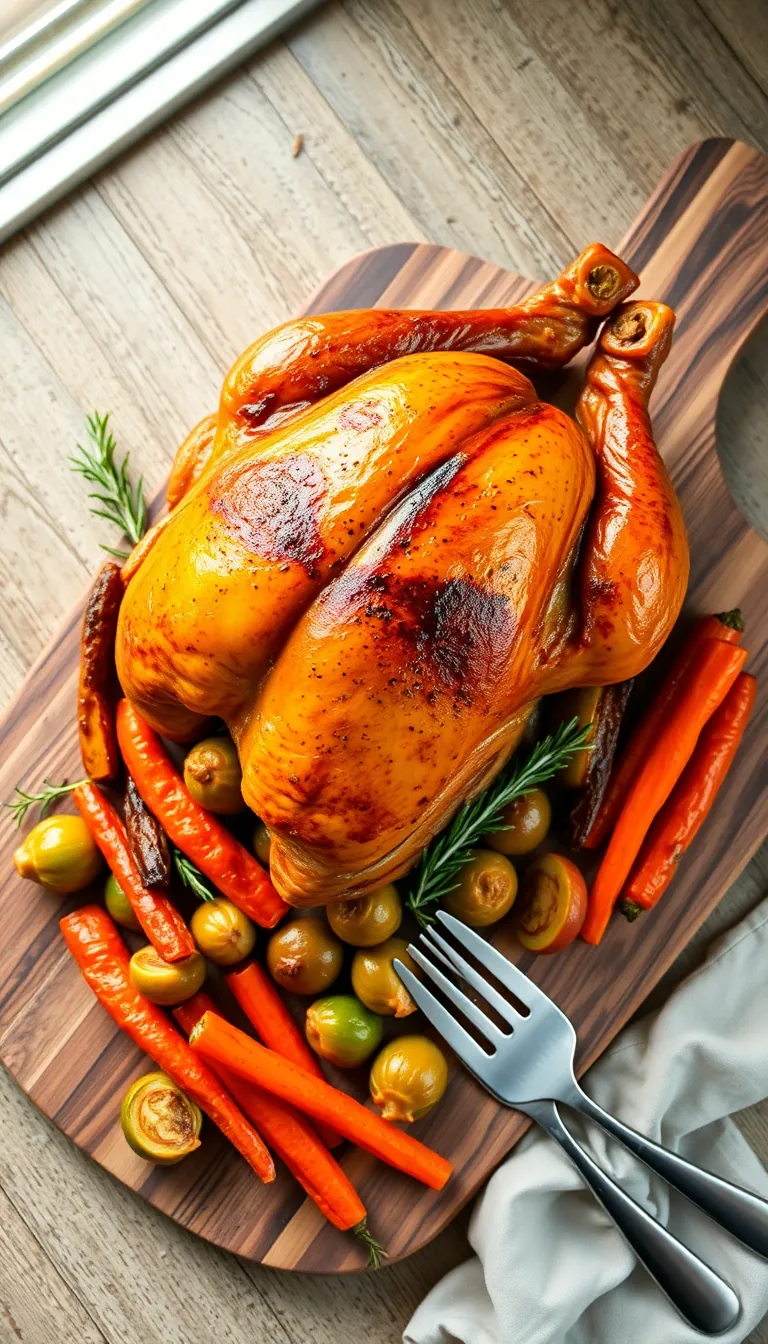
- Juicy and Flavorful: This roast chicken recipe ensures a perfectly moist and tender bird every time, thanks to the simple yet effective seasoning and cooking method.
- Simple Ingredients: With just a handful of pantry staples, you can create a restaurant-quality dish right in your own kitchen.
- Time-Saving: The recipe requires minimal prep work, allowing you to enjoy a delicious homemade meal without spending hours in the kitchen.
- Versatile Pairings: Roast chicken pairs beautifully with a wide variety of sides, making it easy to customize your meal to suit any occasion.
- Healthy and Nutritious: Packed with protein and essential nutrients, this dish is a wholesome choice for family dinners or meal prep.
- Impressive Presentation: A golden-brown, perfectly roasted chicken is sure to impress your guests and elevate any meal.
Why You’ll Love This Recipe
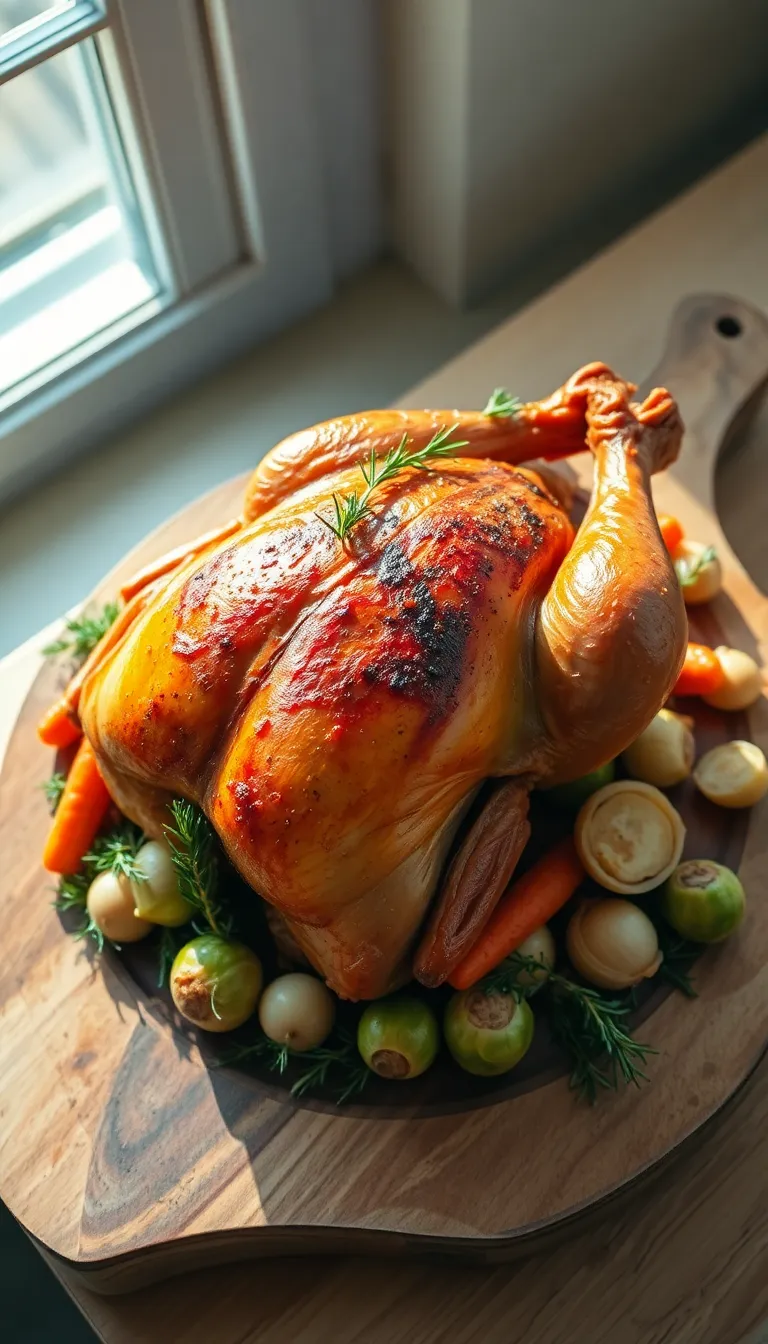
- Juicy and Tender: This roast chicken recipe ensures perfectly cooked meat that’s both juicy and tender, making it a family favorite.
- Easy to Make: With just a few simple steps, even beginner cooks can achieve restaurant-quality results at home.
- Flavorful Seasoning: The blend of herbs and spices used in this recipe enhances the natural flavors of the chicken, offering a deliciously savory taste.
- Time-Saving: With minimal prep time required, this recipe allows you to enjoy a mouthwatering meal without spending hours in the kitchen.
- Healthy and Nutritious: Rich in protein and low in carbs, this roast chicken is a nutritious choice that fits into a balanced diet.
- Versatile Dish: Pair this roast chicken with a variety of sides, from roasted vegetables to mashed potatoes, making it suitable for any occasion.
Ingredients
- 1 whole chicken (about 4-5 pounds),
Make sure it’s thoroughly thawed if previously frozen.
- 2 tablespoons olive oil,
Can substitute with melted butter for a richer flavor.
- 1 1/2 teaspoons salt,
Adjust to taste if using a smaller chicken.
- 1 teaspoon black pepper, freshly ground
- 1 teaspoon garlic powder,
Or use 4 cloves of fresh garlic, minced.
- 1 teaspoon onion powder
- 1 teaspoon dried thyme,
Fresh thyme can also be used; double the amount.
- 1 lemon, quartered
- 1 onion, quartered
- 4 sprigs fresh rosemary,
For added aroma and flavor.
- 2 carrots, cut into chunks
- 2 stalks celery, cut into chunks
- 1 cup chicken broth (optional),
Use for basting or to create a gravy.
Kitchen Tools You’ll Need
- Chef’s Knife: Essential for cutting and preparing the chicken and any vegetables you may include.
- Cutting Board: Provides a stable surface for safely chopping ingredients. A wooden or plastic board is ideal.
- Roasting Pan: Use a sturdy roasting pan to hold the chicken while it cooks. A baking dish can work as an alternative if needed.
- Meat Thermometer: Ensures the chicken is cooked to the correct internal temperature of 165°F (75°C) for safe consumption. If unavailable, you can use a skewer to check if juices run clear.
- Kitchen Twine: Useful for trussing the chicken to ensure even cooking. If you don’t have twine, leaving the chicken untrussed is fine but may affect presentation.
- Basting Brush: Helps evenly coat the chicken with oil or butter for a crispy skin. A spoon can be used as an alternative for basting.
- Tongs: Convenient for handling the chicken without piercing the skin, helping to keep juices inside.
Preparation Steps
- Preheat your oven to 425°F (220°C) to ensure it’s ready for roasting.
- Pat the chicken dry with paper towels to remove excess moisture, which helps achieve crispy skin.
- Season the chicken inside and out generously with salt and pepper. Ensure even coverage for the best flavor.
- Stuff the cavity with aromatics such as lemon halves, garlic cloves, and fresh herbs like thyme or rosemary for added flavor.
- Tuck the chicken wings under the body and tie the legs together with kitchen twine to promote even cooking.
- Place the chicken breast-side up in a roasting pan or large ovenproof skillet.
- Roast the chicken in the preheated oven for about 1 hour, or until the internal temperature reaches 165°F (74°C) when measured in the thickest part of the thigh. Look for golden-brown skin as a visual cue.
- Let the chicken rest for at least 10 minutes before carving to allow the juices to redistribute, ensuring juicier meat.
Serving Suggestions
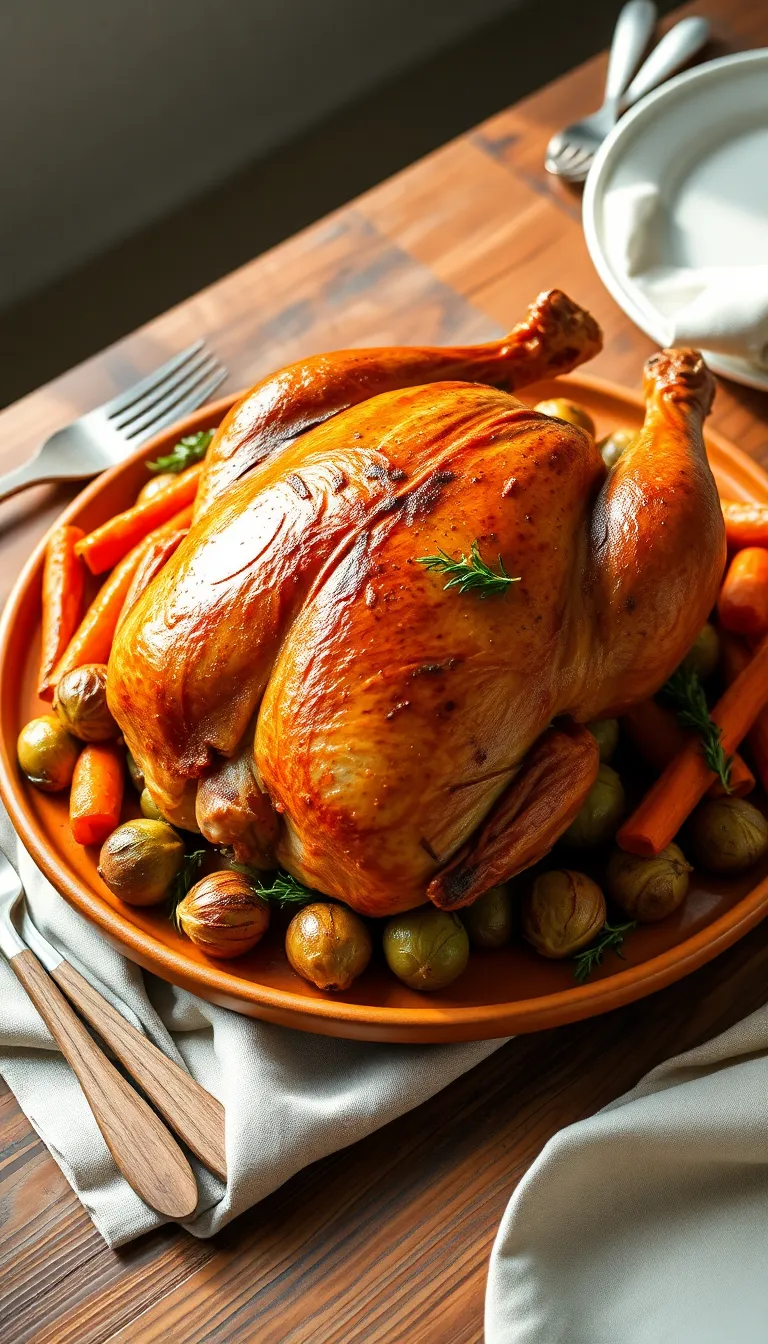
- Classic Mashed Potatoes and Gravy: Pair your roast chicken with creamy mashed potatoes and a rich gravy made from the pan drippings. This classic combination enhances the savory flavors of the chicken and provides a comforting, satisfying meal.
- Fresh Green Salad: Serve the roast chicken alongside a fresh green salad with a light vinaigrette. The crispness and acidity of the salad balance the rich flavors of the chicken and add a refreshing element to the plate.
- Roasted Vegetables: Add a colorful array of roasted seasonal vegetables, such as carrots, Brussels sprouts, and bell peppers. The caramelized edges and natural sweetness of the vegetables complement the savory chicken and create a visually appealing dish.
- Herb Butter and Lemon Slices: Garnish the chicken with a pat of herb-infused butter and a few lemon slices. The butter adds richness, while the lemon provides a zesty contrast that brightens the flavors.
- Crusty Bread and Wine: Offer crusty bread to soak up the delicious juices from the chicken. Pair with a glass of Chardonnay or Pinot Noir, which complement the savory notes of the roast chicken and enhance the dining experience.
- Special Occasion Platter: For a festive gathering, present the roast chicken on a large platter surrounded by pomegranate seeds and fresh herbs such as parsley or thyme. This adds a pop of color and a touch of elegance to the presentation.
Pro Tips for Perfect Results
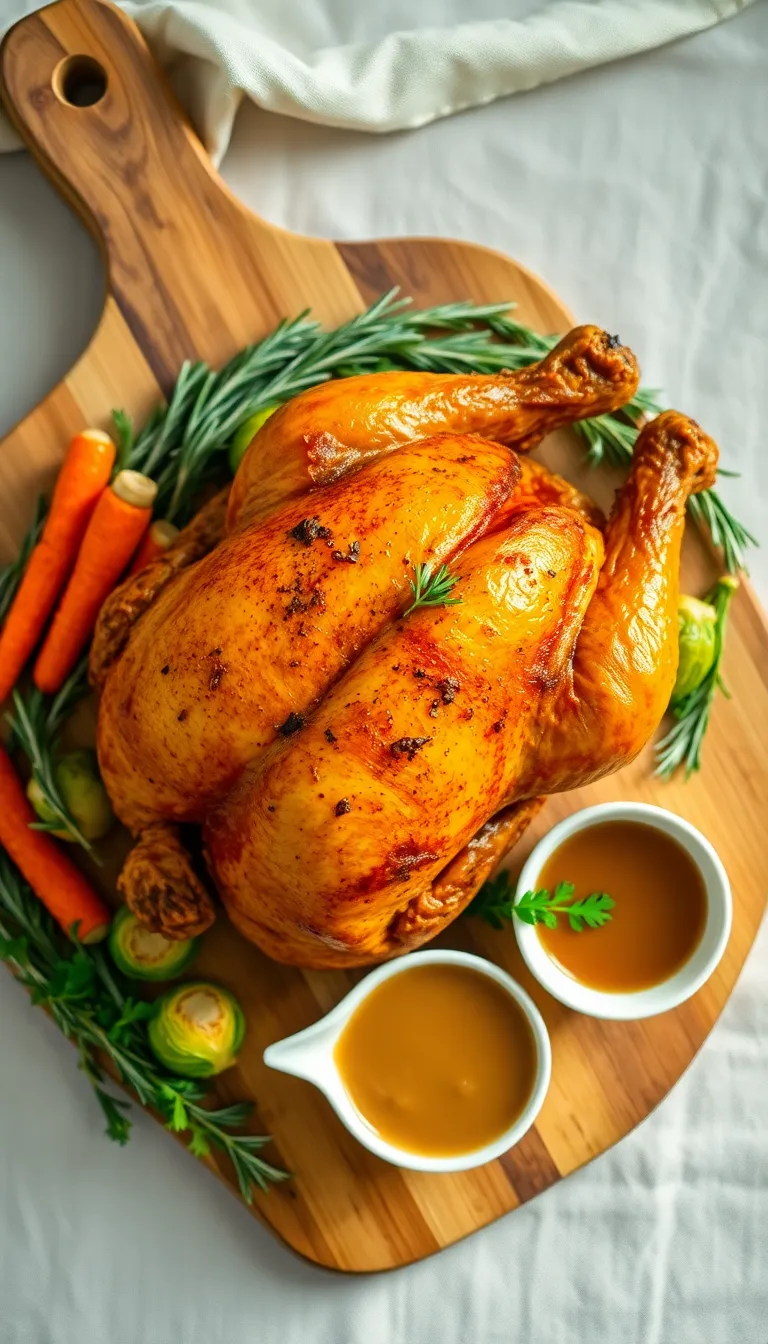
- Dry the Skin for Crispness: Pat the chicken completely dry with paper towels before seasoning and roasting. This will help achieve a perfectly crispy skin by reducing moisture on the surface.
- Season Under the Skin: Gently loosen the skin over the breast and thighs and rub a mixture of herbs and butter directly onto the meat. This technique infuses flavor directly into the chicken and keeps it moist.
- Truss for Even Cooking: Trussing the chicken with kitchen twine helps it cook evenly by keeping the legs and wings close to the body, preventing them from drying out.
- Let It Rest: After roasting, let the chicken rest for at least 15 minutes before carving. This allows the juices to redistribute throughout the meat, ensuring every bite is juicy.
- Make-Ahead Marinade: For deeper flavor, prepare a marinade with your choice of herbs, lemon, and olive oil, and let the chicken marinate in the refrigerator overnight. This step enhances the flavor profile significantly.
- Chef’s Secret – Use an Inverted Rack: Place the chicken on an inverted rack so the hot air circulates more evenly around the bird. This technique ensures an evenly browned and crispy skin all over.
Common Mistakes to Avoid
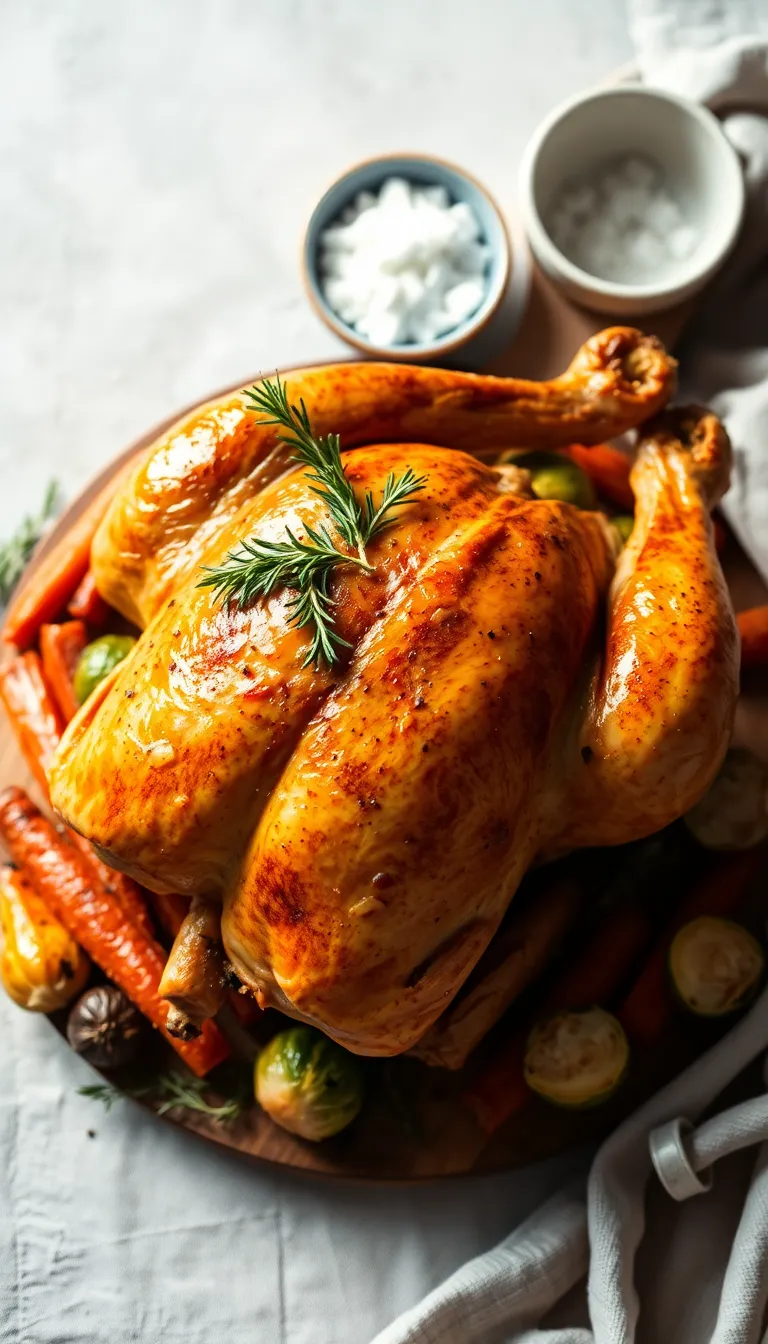
- Not Drying the Chicken Properly: Moisture on the chicken skin can prevent it from getting crispy. Make sure to pat the chicken dry with paper towels before seasoning. This will help achieve that desired crispy skin by allowing it to brown evenly in the oven.
- Under-seasoning: Many cooks don’t use enough salt and pepper, which can result in a bland chicken. Don’t be afraid to season generously, both inside and out, including under the skin. This will enhance the flavor throughout the meat.
- Roasting at the Wrong Temperature: Cooking at too low a temperature can result in rubbery skin, while too high can dry out the meat. Aim for an oven temperature around 425°F (220°C) to balance between crisp skin and juicy meat.
- Skipping the Resting Period: Cutting into the chicken immediately after roasting can cause juices to run out, leaving the meat dry. Allow the chicken to rest for at least 10-15 minutes after removing it from the oven. This allows juices to redistribute, keeping the meat moist.
- Using Inaccurate Cooking Times: Solely relying on a set cooking time can lead to undercooked or overcooked chicken. Use a meat thermometer to check for doneness. The internal temperature should reach 165°F (74°C) in the thickest part of the breast.
Storage and Reheating Tips
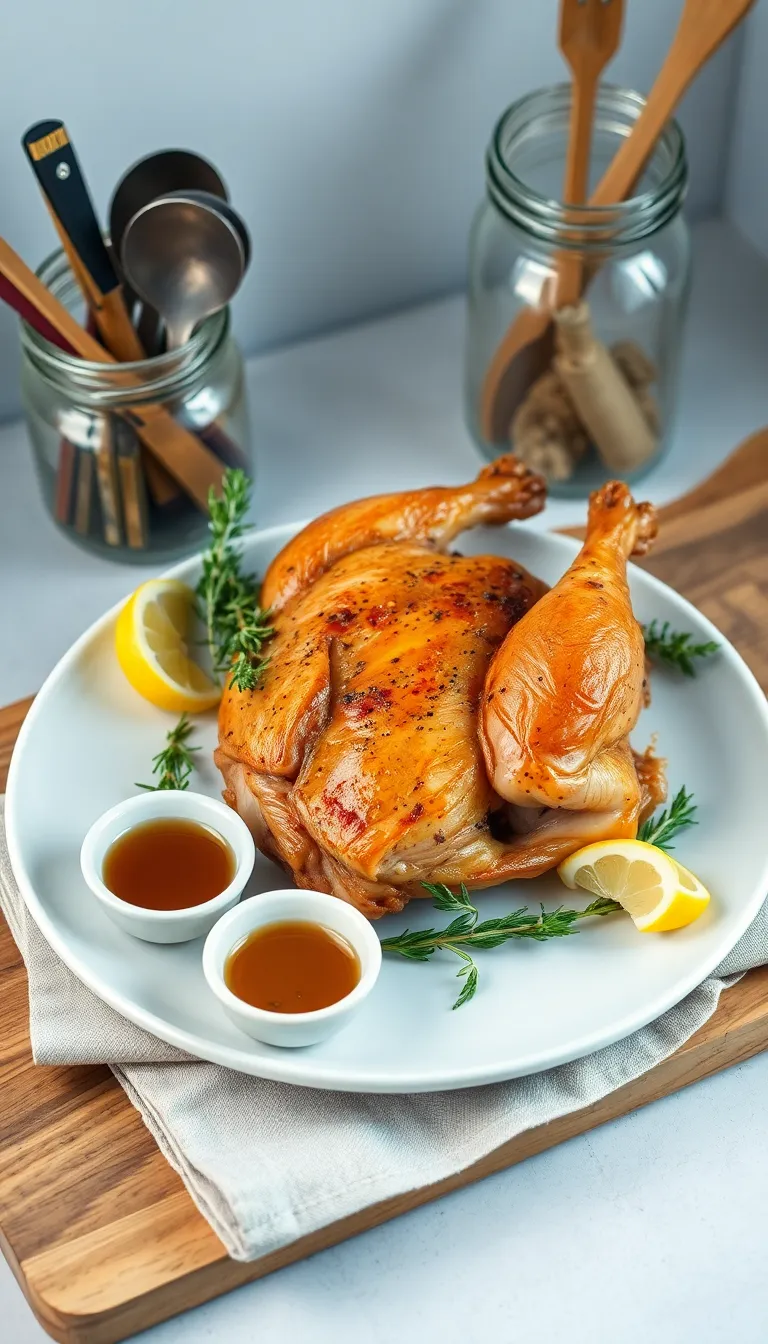
- Allow the roast chicken to cool to room temperature before storing. Do not leave it out for more than 2 hours to avoid bacterial growth.
- Store leftover chicken in an airtight container to maintain freshness and prevent odor absorption in the refrigerator.
- Refrigerate the chicken within 2 hours of cooking, and consume it within 3 to 4 days for optimal quality and safety.
- If you wish to freeze the roast chicken, remove the meat from the bones and place it in a freezer-safe bag or container. Label and date the package for easy identification.
- Frozen chicken can be stored for up to 4 months. For best results, thaw in the refrigerator overnight before reheating.
- To reheat the chicken, preheat the oven to 350°F (175°C). Place the chicken in an oven-safe dish, cover with foil to retain moisture, and heat for 20 to 25 minutes until warmed through.
- Alternatively, reheat smaller portions in the microwave by placing chicken on a microwave-safe plate, covering it with a damp paper towel, and heating on medium power in 1-minute increments until hot.
- Avoid reheating chicken more than once to maintain both quality and food safety.
- Always ensure the chicken reaches an internal temperature of 165°F (74°C) when reheated, using a food thermometer to verify.
Following these storage and reheating tips will help you enjoy your roast chicken leftovers safely and deliciously. Proper handling and reheating ensure you maintain the flavor and texture of the dish, preventing food waste while maximizing your meal enjoyment.
Frequently Asked Questions
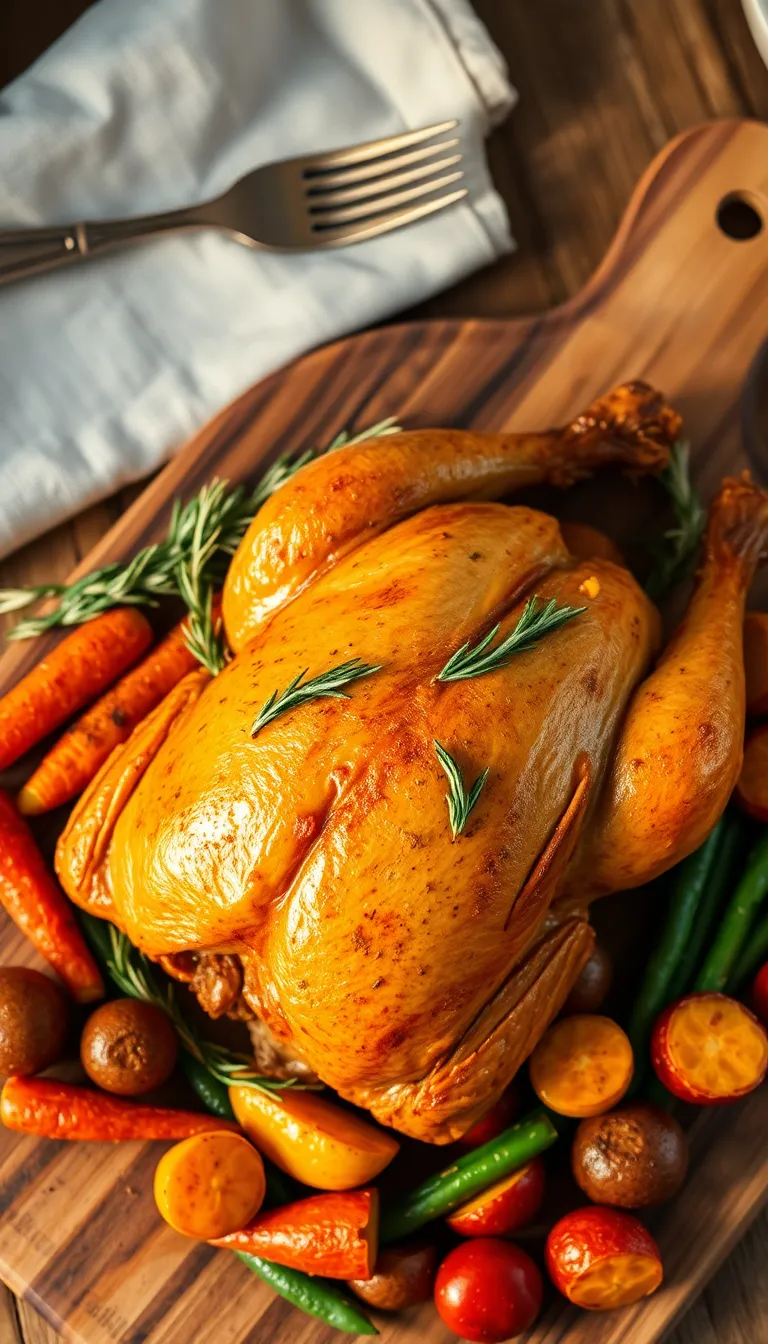
Q: Can I use a different type of poultry instead of chicken?
- Yes, you can substitute chicken with turkey or Cornish hens. Adjust cooking times accordingly as they may vary based on the size and type of poultry.
Q: What if my chicken skin doesn’t get crispy?
- Ensure the chicken is thoroughly dried before roasting and avoid overcrowding the oven to allow hot air to circulate and crisp the skin.
Q: How can I add more flavor to the roast chicken?
- Try rubbing a mixture of butter, garlic, and herbs under the skin before roasting, or marinate the chicken overnight for deeper flavor.
Q: What should I do if my roast chicken is undercooked?
- Return it to the oven and continue cooking until it reaches an internal temperature of 165°F (75°C) in the thickest part of the meat.
Q: Can I use boneless chicken for this recipe?
- Boneless chicken can be used, but cooking times will be shorter. Monitor closely to avoid overcooking and drying out the meat.
Q: How do I know when the roast chicken is done?
- Use a meat thermometer to check that the internal temperature has reached 165°F (75°C). The juices should also run clear when the chicken is pierced.
Final Thoughts
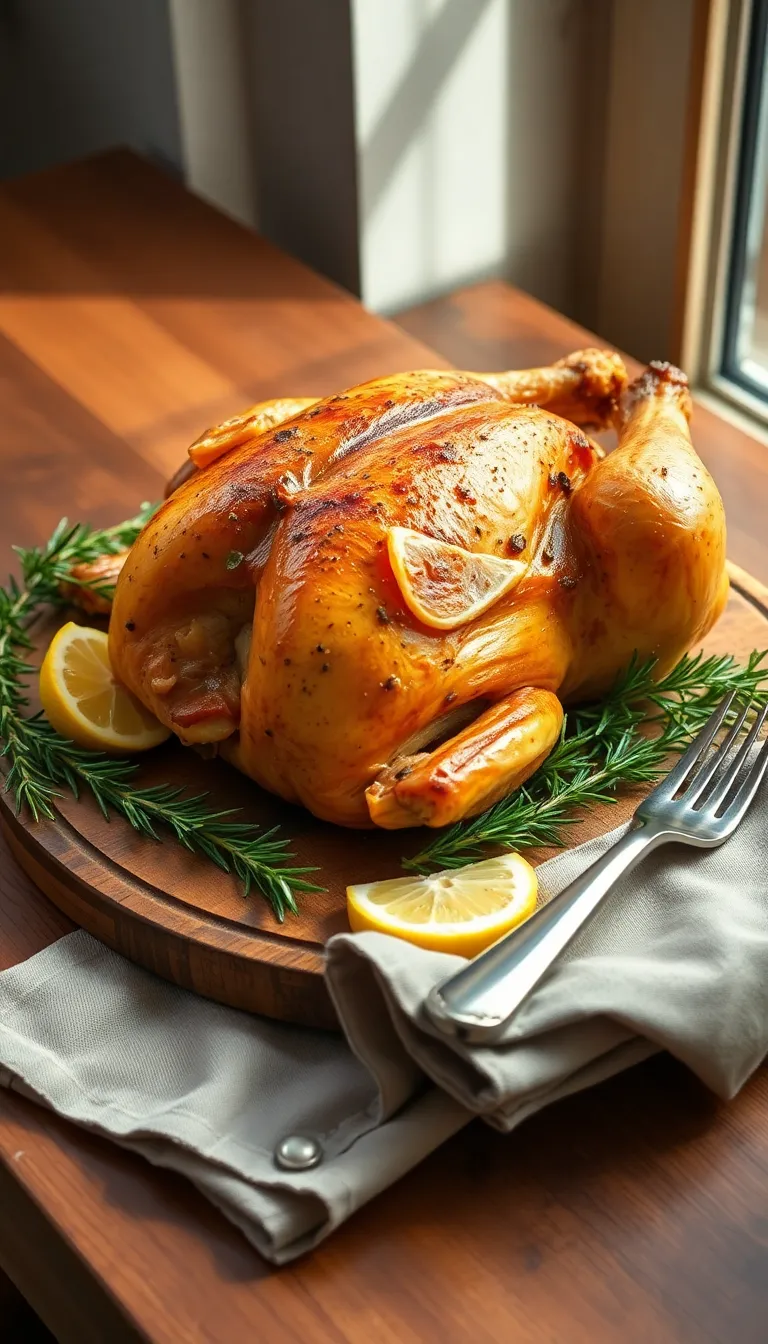
This roast chicken recipe is a timeless classic that combines simplicity with rich flavor. With its perfectly crisp skin and juicy, tender meat, it’s a dish that transforms any meal into a special occasion. It’s a true testament to how delicious a home-cooked meal can be.
Feel free to customize this recipe to suit your tastes by experimenting with different herbs and spices. Make it your own by adding a personal touch, whether it’s a squeeze of lemon or a sprinkle of your favorite seasoning. Cooking should be a joyful experience, and this recipe offers a wonderful opportunity to explore your culinary creativity.
We warmly invite you to try this roast chicken recipe and share it with loved ones. Bring a touch of warmth and comfort to your table with this delightful dish. Happy cooking!
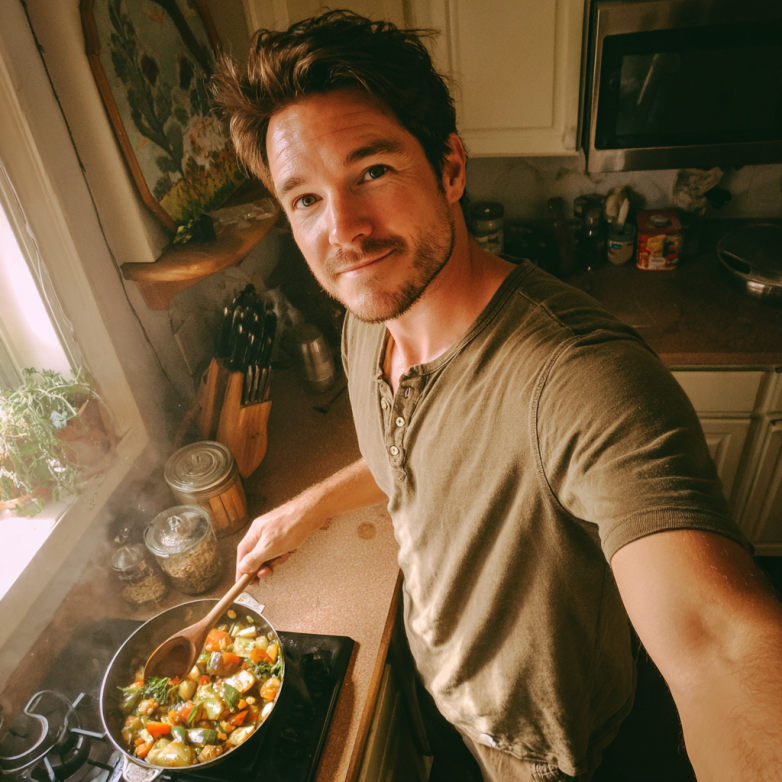
I’m Jonny, the cook, writer, and food lover behind this flavorful corner of the internet. Whether it’s a sizzling weeknight stir-fry, a no-bake dessert that saves the day, or a comforting Sunday classic — this blog is where I share recipes that are bold, doable, and made to impress without the stress.

